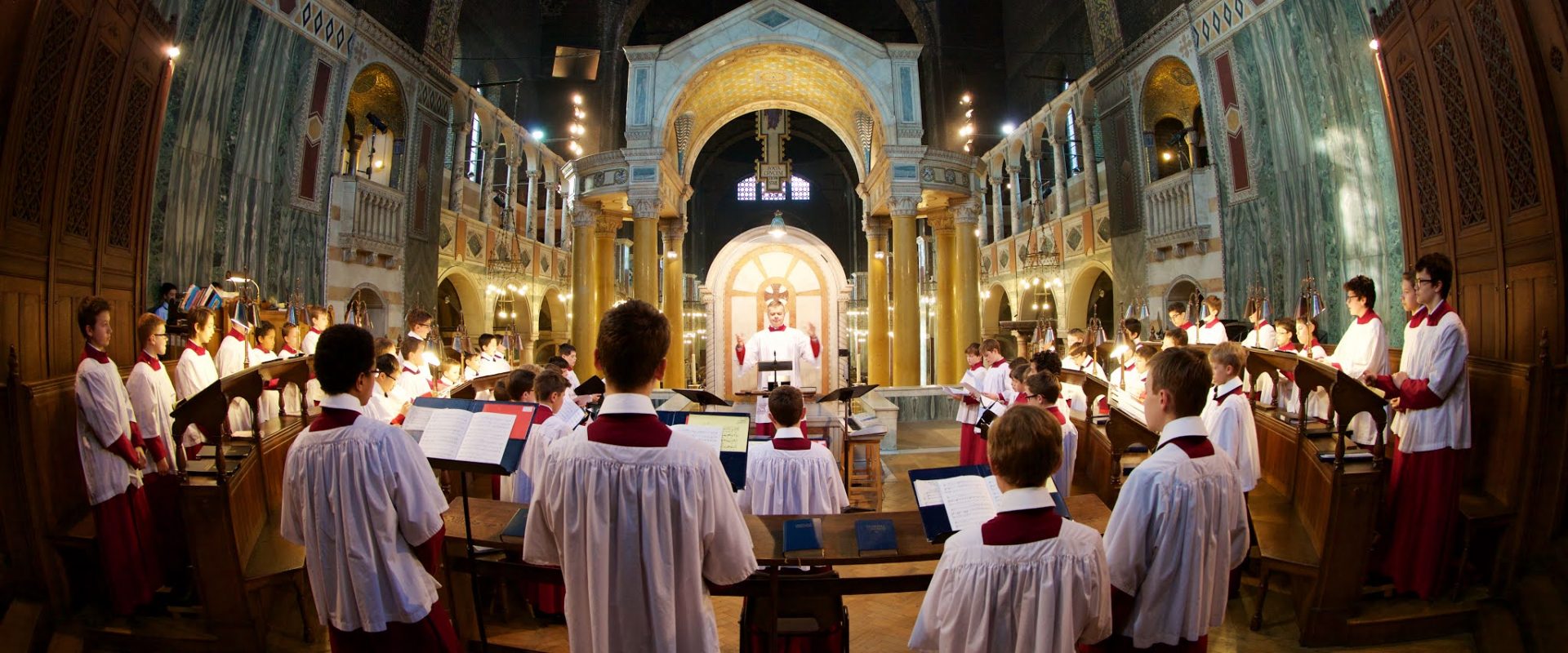Sacred Polyphony
Sacred choral music holds an esteemed role in the Church’s treasury. After chant, it adorns the Sacred Liturgy, particularly when it employs liturgical texts and styles passed down through the centuries.
Polyphony, in the music theory sense, is a composition with two or more independent melodic lines that proceed horizontally to produce an effective implied or literal harmony as well. When the Church mentions sacred polyphony she is most often referring to the religious works of the masters of the Renaissance like Palestrina, Victoria, Tallis, and others, although colloquially the term can be broadened to include other works that include multiple melodic lines.
To aid choirs to build a practical repertoire of sacred polyphony, the CMAA has produced The Parish Book of Motets. The book contains fifty-four motets of varying difficulty in English and Latin specially curated for the average parish choir, which can all be accessed for free on this site. Additional polyphonic resources are available below.

Choral Resources
The Parish Book of Motets
> Recordings and Scores
Simple Choral Gradual by Richard Rice (description)
Simple Choral Gradual by Richard Rice (PDF)
Introits for Treble Choir (Richard Rice)
Secunda Anthologia Vocalis (Ravanello, 1907) (three-part works)
Accessible Choral Works
CMAA Commissions
Missa Pro Defunctis, Casciolini (SATB)
Receive, O Lord (link to composer’s site), Lemme (YouTube video)
Two-Part
Three-Part
Four-Part
Arcadelt, Ave Maria
Lotti, Ecce Panis (/TTBB)
Pitoni, Cantate Domino
Christ the Glory – Lalouette
Come Holy Ghost – Gibbons
Easter Vigil Baptism Music – Ignatowski (Canticanova)
Entrata Festiva – Peeters
En Natus Est Emmanuel – Praetorius
Jubilate Deo – Mozart
Laudate Dominum (round) – Croft
Laudate Nomen Domini – Tye
Miserere – Lotti
O Taste and See – Williams
O Vos Omnes – Correa
Panis Angelicus – Lambilotte
Psallite – Praetorius
Regina Coeli – Lotti
Salve Mater – Proulx
Transeamus – Schnabel
Verily I Say Unto You – Tallis
Liturgical/Seasonal
Collections for Equal Voices
Mass Ordinary
About the Ordinary
The Ordinary of the Mass are those prayers which do not change. Composers throughout the centuries have gifted us with at least 18 Gregorian settings and thousands of polyphonic settings. Listed below are just a few suggested settings.
Kyrie – Gloria – Credo – Sanctus – Agnus Dei – Ite Missa est
Unison Masses
Parish Book of Chant, Kyriale – all 18 Gregorian settings
Langlais, Missa in Simplicitate
Rheinberger, Missa Puerorum
Viadana, Missa Prima Dominicalis (arr.)
Willan, Missa Maria Magdalena
Willan, Mass of St. Hugh
Willan, Mass of St. Teresa (forthcoming)
Willan, Mass of St. Peter (forthcoming)
(USA©Healy Willan Society)
Yon, Messe Pastorale
Two-Part Masses
Three-Part Masses
Polyphonic Masses
Casciolini, Mass in a, Missa Brevis
Croce, Missa Sexti, Tertii, Octavi
Andrea Gabrieli, Missa Brevis a4, Quando leita sperari
Hassler, Missa Secunda, Tertia, Dixit Maria
Lotti, Missa Brevis
Mozart, Missa Brevis in C (Orgelsolo), Brevis in D
Palestrina, Missa Aeterna Christi Munera, Missa Brevis
Rheinberger, Missa S. Crucis, Brevis Trinitas
Schubert, Mass in G
Tye, Missa Euge Bone
Viadana, Missa L’Hora Passa
Victoria, Missa Brevis, Dominicalis, Salve,
O Quam Gloriosum, Quarti Toni, O Magnum Mysterium
Requiem Masses
Casciolini
(typeset by David Hughes for 2021 Colloquium)
Michael Haydn in c, Sigismundo
Masses for Equal Voices/Children
Allen, Missa Rex Genitor (TTB/SSA)
Casciolini, Missa Sine Nomine (SSA)
Faure, Messe Basse (SSA)
*Hosanna missing from Faure’s Benedictus
Lemme, Mass for 3 Voices (TTB)
Lotti, Mass in a (TTB)
Pękiel, Missa Brevis No. 4 (TTBB)
Rheinberger, Mass in A, Op.126, (SSA), Op.187, (SSA) Op. 172, (TTBB), Op.190 (TTBB)
Viadana, Missa Sine Nomine (TTB)

